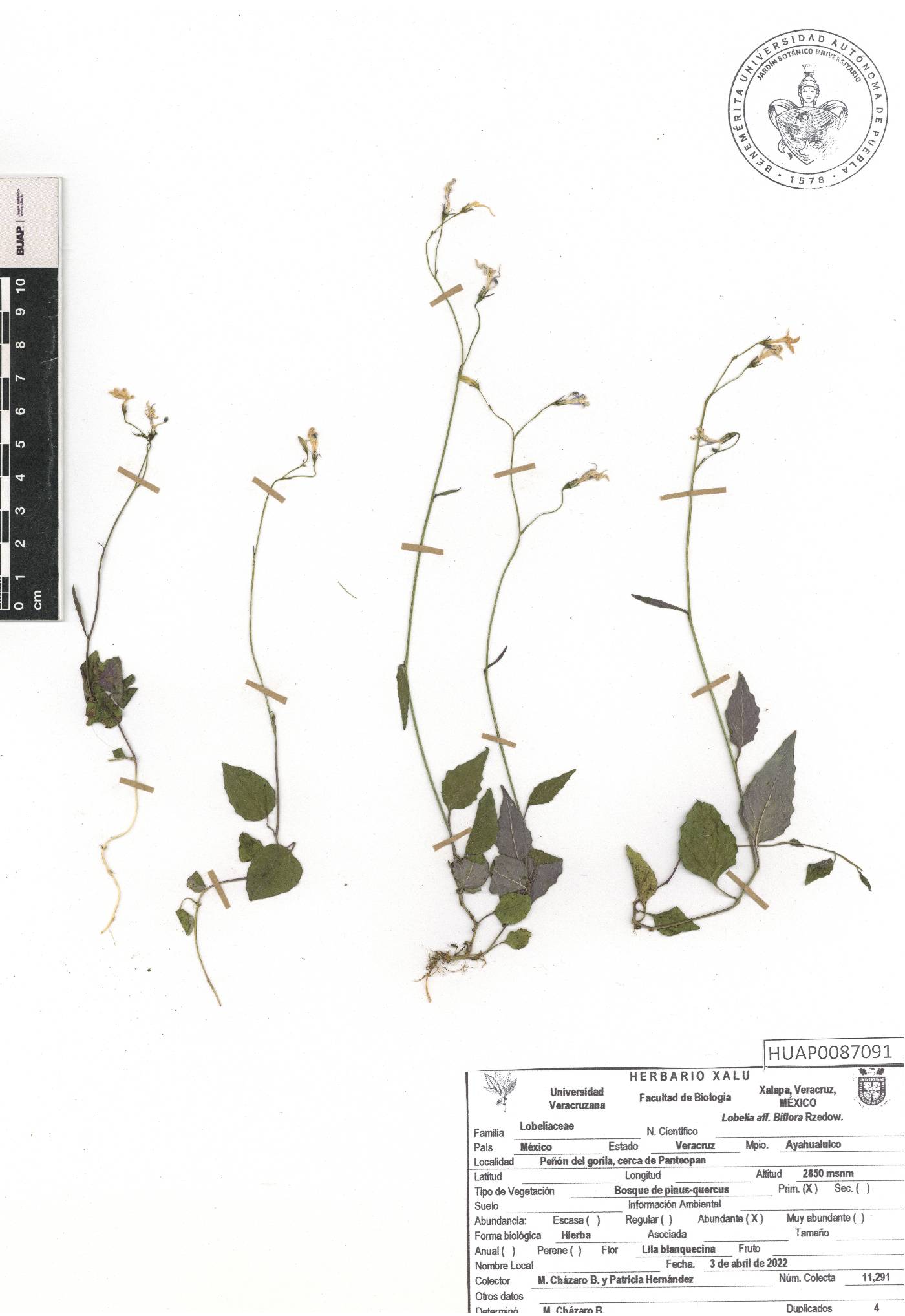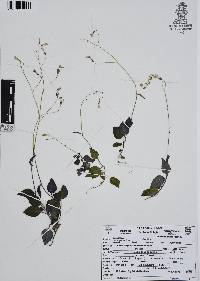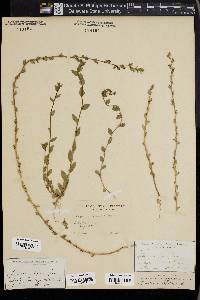Lobelia biflora
|
|
|
|
Family: Campanulaceae
|
Plants annual. Stems up to 15 cm, erect, solitary. Leaves cauline, the petioles 1-4 mm; blades generally ovate, occasionally elliptic or almost orbicular, the margins coarsely toothed, the tips acute, the bases cuneate to subcordate. Flowers in a terminal raceme; pedicels 1-3 mm, glabrous; hypanthium ca. 1.5 mm; nectar spurs absent; calyx lobes ca. 1.5 mm, margins entire, ascending; corollas white tinged pink-purple, the tube ca. 4 mm, with a dorsal slit but without lateral “windows”; filament tube ca. 3.5 mm, the two lower anthers with stiff bristles at the tips. Fruit not seen. Description from Rzed, 2008. Editor: I. Andrade-Munoz, 2025. Habitat: Growing in pine-oak forests at 2600-2650 m elevation. Distribution: Endemic to Veracruz. Note: L. biflora can appear similar to L. schmitzii in leaf shape, corolla characteristics, and geographic range. However, it is differentiated from L. schmitzii by its longevity; L. biflora is a perennial while L. schmitzii is an annual. Plantas anuales. Tallos hasta 15 cm, erectos, solitarios. Hojas caulinares, los pecíolos 1-4 mm; láminas generalmente ovadas, en ocasiones elípticas o casi orbiculares, los márgenes dentados, las puntas agudas, las bases cuneadas a subcordatas. Flores en un racimo terminal; pedicelos 1-3 mm, glabros; hipanto ca. 1.5 mm; esponoles de néctar ausentes; lobulos del caliz ca. 1.5 mm, márgenes enteros, ascendiendo; corolas blancas con manchas rosas-moradas, el tubo ca. 4 mm, con una raja dorsal pero sin “ventanas” laterales; tubo de los filamentos ca. 3.5 mm, las dos antares inferiores con pelos erizados en las puntas. Fruto no visto. Descripción de Rzed, 2008. Editora: I. Andrade-Munoz, 2025. Hábitat: Creciendo en bosques de pino-encino a 2600-2650 m de elevación. Distribución: Endemico a Veracruz. Nota: L. biflora puede aparecer similar a L. schmitzii en forma de hoja, características de la corola, y distribución geográfica. Es diferenciada de L. schmitzii por su longevidad; L. biflora es planta perenne, mientras L. schmitzii es planta anual. |



